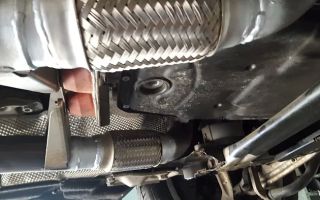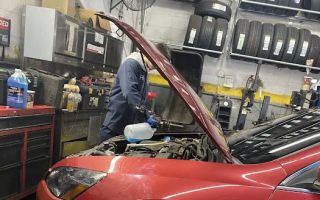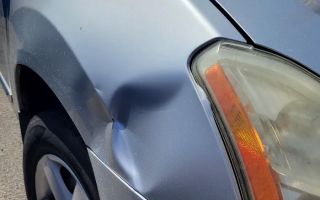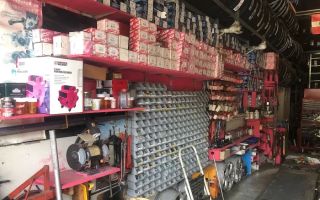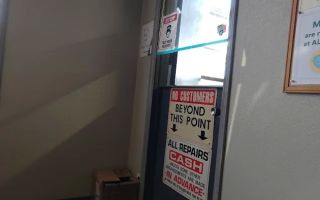How Can I Tell if My Car Battery Needs Replacing Instead of a Jumpstart?
There’s nothing quite as frustrating as sitting in your car, turning the key, and hearing that dreadful click instead of the roar of the engine starting. If you're like me, your first instinct might be to jumpstart the car and get on with your day. But how can you tell whether your car needs a simple jumpstart or if it's time to replace the battery altogether? Having experienced this scenario firsthand, I’ve learned to recognize the subtle signs and symptoms of a failing battery, and I’ll share that knowledge with you. Understanding when it’s time to replace your battery can save you from unnecessary frustration and prevent getting stranded at inconvenient times.
1. The First Sign: A Slow Crank
The first time I encountered a slow crank, I was in a rush to meet a friend for dinner. I turned the key in the ignition, and instead of the usual quick start, the engine slowly cranked over. It took a few seconds longer than normal, and I started to worry that something was wrong. At that point, I wasn’t sure if it was a weak battery or something more serious. I immediately tried to jumpstart the car, and fortunately, it worked.
However, I soon learned that a slow crank is one of the most common symptoms of a weak or dying battery. When you turn the key and the engine cranks slowly, it’s a sign that the battery is no longer able to provide the necessary voltage to start the car. This is often a precursor to the battery completely failing. If you’ve noticed that your car’s engine is slow to crank, it's likely time to check the health of your battery or consider replacing it.
If the slow crank doesn’t resolve with a jumpstart, it might indicate that the battery no longer holds a charge effectively and needs replacement. A jumpstart could temporarily get your car running, but the battery will likely fail again shortly thereafter.
2. The Dashboard Lights Aren’t Coming On
Another telltale sign I noticed when my car battery was failing was that the dashboard lights weren’t coming on when I turned the key. At first, I thought it was just a glitch or that I had accidentally left something on, but after checking everything, I realized the problem was the battery. When you turn the key and the dashboard lights flicker or don’t come on at all, it’s often a sign that the battery doesn’t have enough power to supply the vehicle’s electrical systems.
Without sufficient power from the battery, even the most basic functions like the lights, radio, or air conditioning might not work properly. If you turn the key and notice that the dashboard lights are dim or entirely absent, it could be an indication that the battery is too weak to support the car’s electronics. This is a clear sign that it’s time to think about a replacement.
If you’ve tried jumpstarting the car and the dashboard lights still don’t function as they should, this is a sure sign that the battery is not holding a charge. In this case, replacing the battery is your best option.
3. The Car Struggles to Start, Especially in Cold Weather
If you live in a region with cold winters, you’re probably familiar with the struggle of starting your car in freezing temperatures. However, it’s important to note that if your car is having trouble starting in cold weather, and this problem persists even after a jumpstart, your battery may be to blame.
In the colder months, batteries naturally lose some of their power. A weak battery that is already on its way out can struggle even more when temperatures drop. I had an experience where my car would barely start on cold mornings. After a jumpstart, it would run fine for the rest of the day, but the next cold morning, the problem would return.
Cold weather exacerbates the condition of a failing battery, so if you’re finding it difficult to start your car even after a jumpstart in winter, it’s a strong indication that your battery is on its last legs. Batteries that are over three years old are especially prone to failing in cold conditions.
4. The Battery Case Appears Swollen or Leaking
Sometimes, a battery will show physical signs of damage before it even starts to fail. I was once shocked to find my car battery swollen, which was a clear indicator that something was wrong. A swollen battery case is a sign that the battery is under too much stress, often caused by overcharging, extreme temperature fluctuations, or simply age. Additionally, if you notice any leakage or corrosion around the battery terminals, this could be a sign that the battery is failing or that the acid inside is leaking.
It’s important to address a swollen or leaking battery immediately. Continuing to use a battery in this condition could cause further damage to your car’s electrical system. If you notice any of these symptoms, it’s best to replace the battery as soon as possible to avoid more serious issues.
5. The Car’s Electrical Systems Are Acting Up
During one of my drives, I noticed that the car’s electrical systems started acting erratically. The lights would dim, and the radio would cut out intermittently. After some troubleshooting, I realized the issue was tied to the battery’s inability to consistently power the vehicle’s electrical components. This was a clear sign that the battery was weak and wasn’t providing enough voltage for all the systems to function smoothly.
If you’ve experienced similar issues—whether it’s the headlights flickering, the radio cutting in and out, or other electrical malfunctions—this could point to a failing battery. These issues occur because a weak battery doesn’t have the capacity to power everything in your car consistently. If a jumpstart doesn’t solve the problem, it’s time to replace the battery.
6. The Car is Over Three Years Old
As a rule of thumb, car batteries typically last between three to five years, depending on factors like usage and climate. If your car is over three years old and you’re experiencing any of the symptoms mentioned above, the chances are high that the battery needs replacing. I once had a battery that lasted for almost four years before it started showing signs of weakness. After my jumpstart attempts failed, I replaced it and the car started running like new again.
If you’ve been driving with an older battery, it’s wise to start planning for a replacement. Batteries naturally degrade over time, and a battery that’s several years old is more likely to fail without warning. If you’re unsure about the age of your battery, you can always have it tested at an auto parts store to see how much life it has left.
If you’ve gone through these steps and your car still won’t start, even after a jumpstart, the battery is likely beyond saving and needs to be replaced. Sometimes, getting a jumpstart isn’t enough, and replacing the battery is the best solution to ensure your car runs reliably.
SEO Title: How to Tell if Your Car Battery Needs Replacing Instead of a Jumpstart
SEO Keywords: car battery, jumpstart, car battery replacement, weak car battery, battery symptoms
SEO Description: Discover how to tell if your car battery needs replacing instead of just a jumpstart. Learn about the signs of a failing battery and when to replace it for a reliable car.
For more information on how to handle car battery issues or for roadside assistance, consider checking out Rescue & Towing for professional services.




